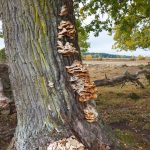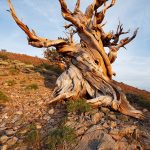Common Problems With Western Red Cedar Trees
While Western red cedar trees make for a great windbreak or natural privacy screen, they aren’t without their share of problems. We’re here to educate you on some of the most common types of trees found in the Portland area while offering you tips on how to best take care of them. Learn more about a few of the most common issues with Western red cedars.
Root Rot
If you have a younger red cedar, be aware that it is more susceptible to root rot. The Armillaria ostoyae fungus is especially problematic and can quickly dig its way deep into the roots of your tree. Phellinus weirii and other butt-rot fungi are also known to cause deterioration in younger red cedars by harming the “included sapwood,” which is a light-colored strip inside of the cedar’s heartwood that is susceptible to infection.
Flagging
It’s not unusual to notice your Western red cedar’s branches, twigs and leaves turning brown during dry, hot conditions since they thrive in soil that has plenty of water. This shift in color is a natural occurrence known as flagging, but sometimes those brown branches and leaves can become a bit of an eyesore until the healthy growth starts to come through. There are times where flagging is the result of the evergreen needing more water rather than a sign of disease.
Wildlife
Certain members of the animal kingdom seem to love Western red cedars just as much as we do. Depending on where you live, you may have issues with skunks, deer, raccoons, rodents and elk nibbling at your cedar tree. While beautiful, deer can be especially problematic since they love to browse through the leaves. We recommend taking protective measures if you have a sapling or seedling to prevent wildlife damage. There are also some birds that love to damage the branches and leaves of this specific type of tree, such as sapsuckers, woodpeckers and tree swallows.
Beetles
Most insects don’t particularly care for Western red cedars, but there are some beetles they tend to attract. Older and unhealthy trees are easy targets for bark beetles and can potentially wither and die from severe damage. Unhealthy trees are also susceptible to attacks by ambrosia beetles while the healthiest of Western red cedars can be eaten away by the flathead western cedar borer. What’s especially bad about the flathead borer is that they lay eggs just underneath the bark of the tree where the larvae eat through the branches of the cedar.
If you ever notice any problems with your cedars, common or not, remember that help from Inexpensive Tree Care is just a phone call away. Call us at (503) 504-3724.




